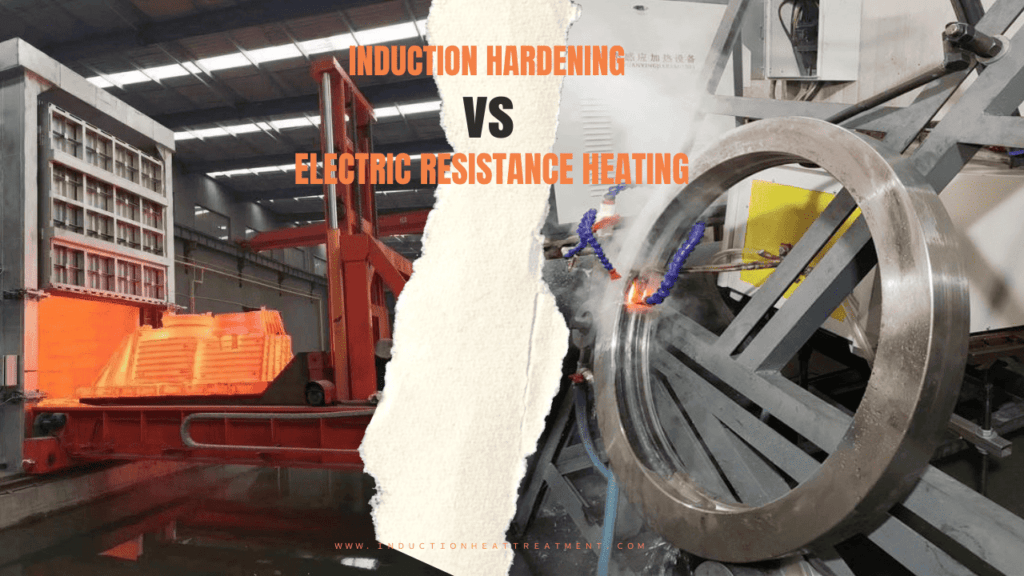
Induction hardening and electric resistance heating are two different methods of heating electrically conductive materials, such as metals or semiconductors, by electromagnetic induction. They have some similarities and differences in terms of their principles, advantages, disadvantages, and applications.
Here is a brief comparison of the two methods:
- Principle: Induction hardening uses an alternating current (AC) to generate a changing magnetic field that induces eddy currents in the material. These eddy currents produce heat due to the resistance of the material. Electric resistance heating uses direct current (DC) or AC to pass through the material, which causes heat due to the resistance of the material.
- Advantages: Induction hardening can produce high temperatures in a short time, which can improve the strength and wear resistance of the material. It can also harden only specific areas of the material without affecting the rest of it. Electric resistance heating can provide uniform heating of large areas of the material, which can be useful for drying, baking, or annealing purposes.
- Disadvantages: Induction hardening requires a high-frequency AC supply and a suitable coil design, which can be costly and complex. It also generates electromagnetic interference (EMI), which can affect other devices or systems. Electric resistance heating requires a large amount of power and a good conductor for the material, which can be inefficient and wasteful.
- Applications: Induction hardening is used for surface hardening, melting, brazing, soldering, shrink fitting, stress relieving, etc. in various industries such as aerospace, automotive, medical, etc. Electric resistance heating is used for electric ironing, electric heaters, pottery drying or baking, heat treatment of metals, etc.
